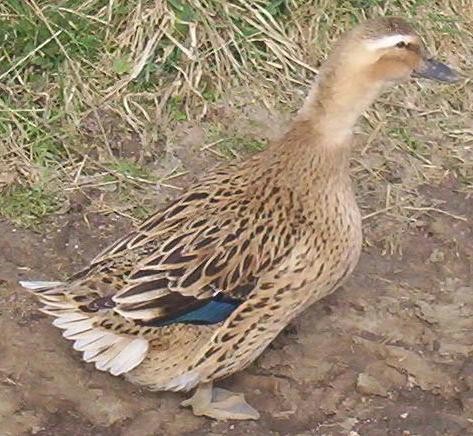Duck Breeds
 |
| Photo Source: Wikipedia.org |
Rouen ducks are a heavyweight breed of domesticated duck raised primarily for decoration, exhibition, or as general purpose ducks. Since they are not prolific egg layers, Rouen ducks are most commonly bred for their meat.
Rouen ducks were first raised in France, but it was not until they reached England in the 19th century that they were refined into the breed recognized as the Rouen today. The French version resembled a larger than average Mallard, but by selective breeding, the British developed the exhibition-type Rouen.
The plumage coloring of both the Rouen drake and the Rouen duck are nearly identical to that of the Mallard drake and Mallard duck. The Mallard color pattern is referred to as gray. Males have green heads, white collars, black tail coverts and dark, ashy brown tail feathers, a gray body, and a deep claret breast. The female Rouen hens are a consistent shade of mahogany brown, with a brown crown and tan eye-stripes extending from bill to the back of the eyes.
Another feature of the female color pattern is the distinct, detailed penciling found on feathers of the head, neck, body, most of the wing and tail. Rouen females can be much darker brown than Mallard females. Both sexes also have blue speculum feathers. However, Rouen speculum feathers are brighter in color and larger in size than that of the Mallard. Adult Rouen ducks are typically significantly larger than Mallard ducks. The Rouen duckling is identical to the Mallard duckling in terms of plumage coloring. In North America, two distinct types are bred: the common, or production-bred, variety that is larger than a Mallard but has a typical duck conformation, and the much larger and squarer standard-bred variety. The production variety normally weighs 6–8 lbs (2.7–3.6 kg) while the standard-bred weighs 9–12 lb (4.1–5.4 kg).
Rouen ducklings can be distinguished from wild mallard ducklings by the presence of a second stripe which runs across their face, just under their eye, whereas mallard ducklings have only one stripe which runs across their eye.
